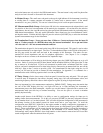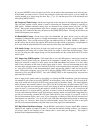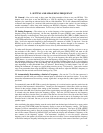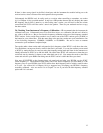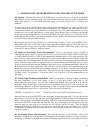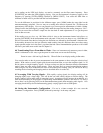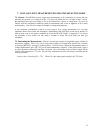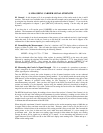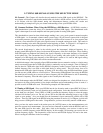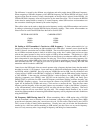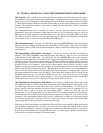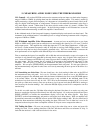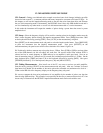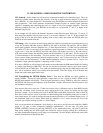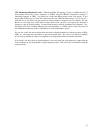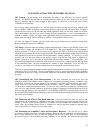17
9. TUNING SSB SIGNALS USING THE SELECTIVE MODE
9.1 General - This Chapter will describe the only method of tuning SSB signals on the HP3586C. The
next chapter will describe a much easier method used only in the A and B versions. Even if you have an A
or B versions with the SSB channel tuning and measurement features, reading this section and
understanding its example will give you a better understanding of how your HP3586 works.
9.2 Common Problems When Using the HP3586 as a SSB Receiver - All HP3586’s contains a
SSB demodulation system that allows it to demodulate USB and LSB signals. The demodulated audio
signal is then output to an audio amplifier and front panel speaker for tuning SSB signals.
This demodulation system has three disadvantages making it not a very good system for normal reception
of SSB signals. As an automatic volume control system it uses a IF gain control system which is designed
to accurately measure signal levels but not optimum for a SSB receiver because of its slow response that
results in a slow reduction of IF gain as the signal increases in strength causing poor audio. This results in
unnatural sounding voice audio with distortion on the beginning of words. In section 4.11 of Chapter 4 we
showed a way of greatly improving SSB audio quality by fixing the instrument’s IF gain.
The second disadvantage is, when in the selective mode the instrument’s displayed frequency for a
properly tuned SSB signal will always be the center RF frequency of the filer’s band pass. Those working
with SSB signals on telephone lines identify the signal’s frequency as the center frequency of its channel
on the phone line. The conventional way for those of use working with radio signals is to identify the
frequency of a SSB signal as the frequency of the SSB signal’s carrier as if it were an AM signal causing
confusion when using a HP3586 in the selective measurement mode.
A third disadvantage is that a properly aligned SSB transmitter does not transmit a carrier or a single strong
steady tone much greater then its SSB signal, which is continually varying in strength. There is nothing in
the pass band of a SSB radio signal for the HP3586’s frequency counter system to lock onto for finding a
channel frequency like it can with an AM signal having a strong carrier. This will always force us to
determine the SSB radio signals frequency by tuning it for best audio using the SSB demodulator system
just like we tune a SSB station on a radio receiver. When testing SSB telephone lines using the HP3586
the technician will usually put a test tone of known frequency into the SSB channel to aid in determining
the channel’s frequency. But with radio signals we don’t usually have this luxury.
These disadvantages make the HP3586C, which was designed for telephone use, a little difficult for us to
use however by using a little patience, a few simple calculations and an understanding of how it works, it’s
possible to use it for SSB radio work. The following examples will illustrate this.
9.3 Tuning a SSB Signal – Place your HP3586 into the low distortion mode or press [RECALL], then 1
to recall our preciously saved our low distortion mode configuration. Select the instrument’s widest filter
on the band pass sub panel. Press [USB] or [LSB] just under the frequency display to select the proper
side band for the band you’re on. Be sure you are still in the 10db auto measuring range to copy a SSB
signal on your speaker. Also you should have the instrument’s input connected in parallel with a SSB
receiver. Tune in a SSB signal on the HP3586 using the procedure in section 4.11 of Chapter 4, which will
help you tune a SSB signal for best audio. Congratulations, you have successfully tuned in a SSB station.
After you have the station tuned in the station press the [AUTO] button on the measurement/entry sub
panel for accurate level measurements. On your receiver connected in parallel with the HP3586, tune it to
the same SSB signal for best audio. Now take a look at the frequency your receiver is tuned to and
compare it with the frequency on the HP3586 display. In this example I’m assuming your receiver has an
accurate frequency display. The frequencies on the receiver and HP3586 displays will not be the same.
What’s causing this difference in the two readings?



